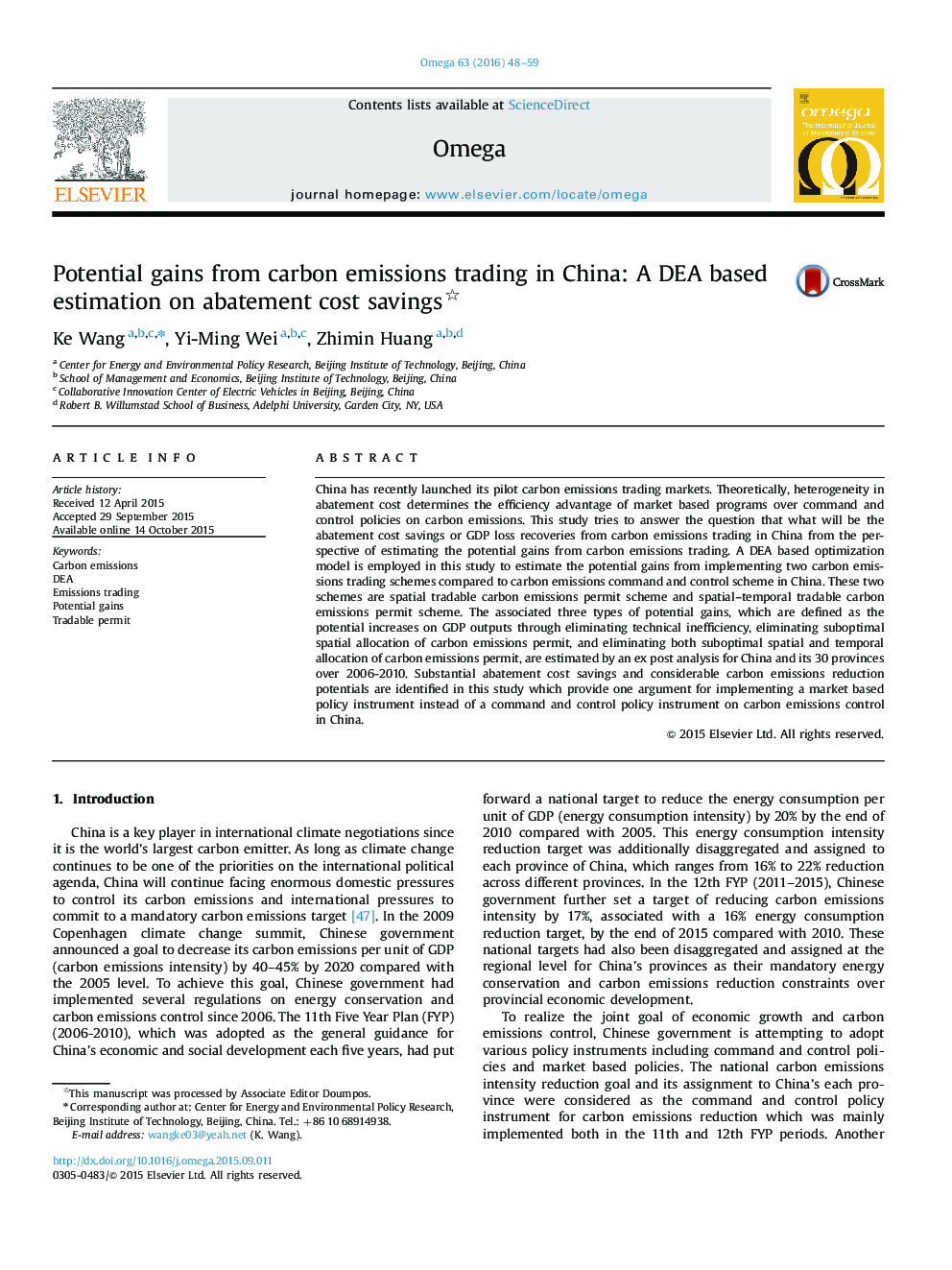| Article ID | Journal | Published Year | Pages | File Type |
|---|---|---|---|---|
| 1032384 | Omega | 2016 | 12 Pages |
•A DEA method is applied for carbon emissions permits trading modeling in China.•Market based abatement policy is more efficient than command and control policy.•Considerable abatement cost savings and emission reductions potentials are identified.•Spatial and temporal emission permit trading provides China with potential gains.
China has recently launched its pilot carbon emissions trading markets. Theoretically, heterogeneity in abatement cost determines the efficiency advantage of market based programs over command and control policies on carbon emissions. This study tries to answer the question that what will be the abatement cost savings or GDP loss recoveries from carbon emissions trading in China from the perspective of estimating the potential gains from carbon emissions trading. A DEA based optimization model is employed in this study to estimate the potential gains from implementing two carbon emissions trading schemes compared to carbon emissions command and control scheme in China. These two schemes are spatial tradable carbon emissions permit scheme and spatial–temporal tradable carbon emissions permit scheme. The associated three types of potential gains, which are defined as the potential increases on GDP outputs through eliminating technical inefficiency, eliminating suboptimal spatial allocation of carbon emissions permit, and eliminating both suboptimal spatial and temporal allocation of carbon emissions permit, are estimated by an ex post analysis for China and its 30 provinces over 2006-2010. Substantial abatement cost savings and considerable carbon emissions reduction potentials are identified in this study which provide one argument for implementing a market based policy instrument instead of a command and control policy instrument on carbon emissions control in China.
